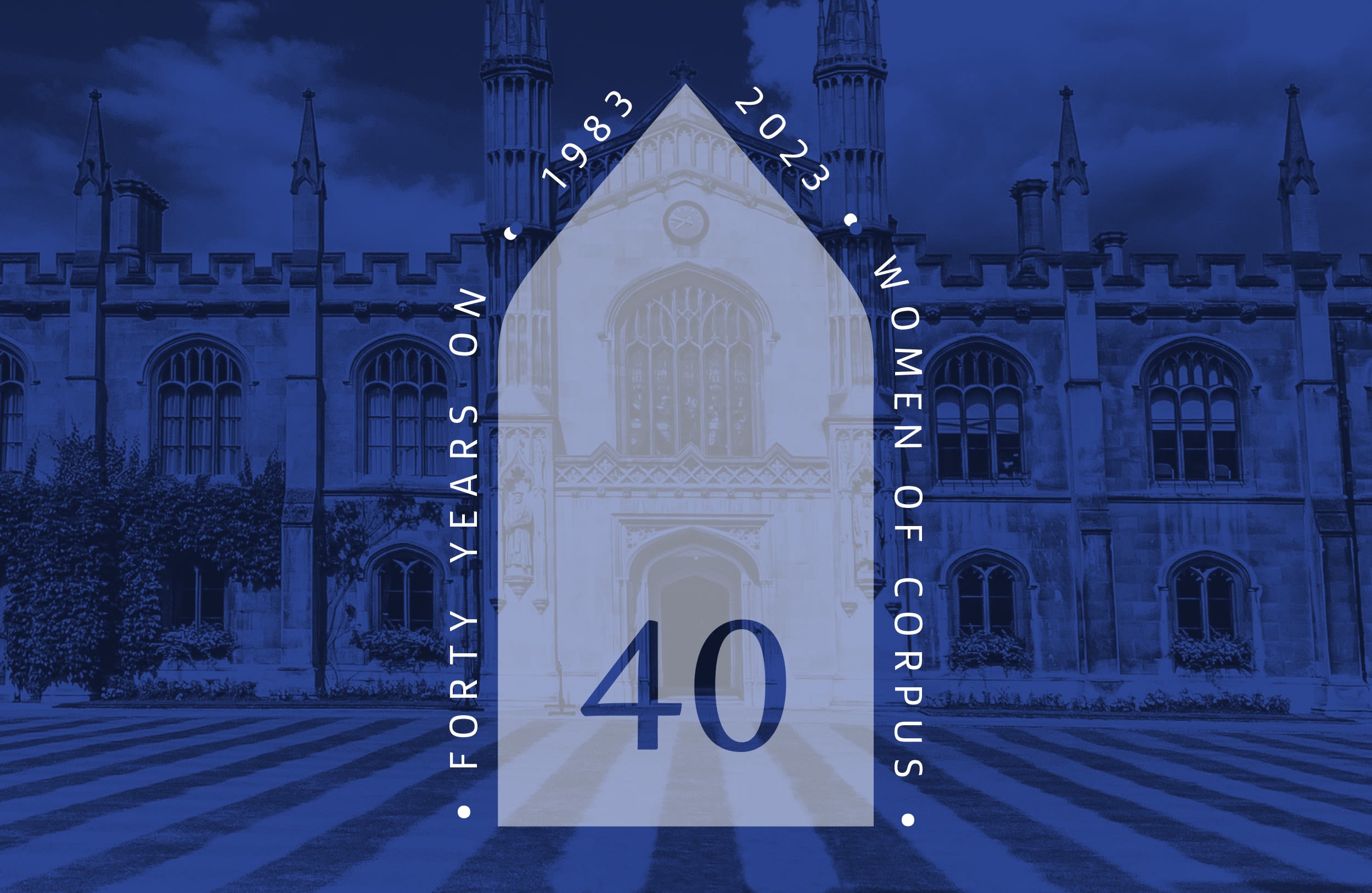PHILIPPA HOSKIN
(2019)
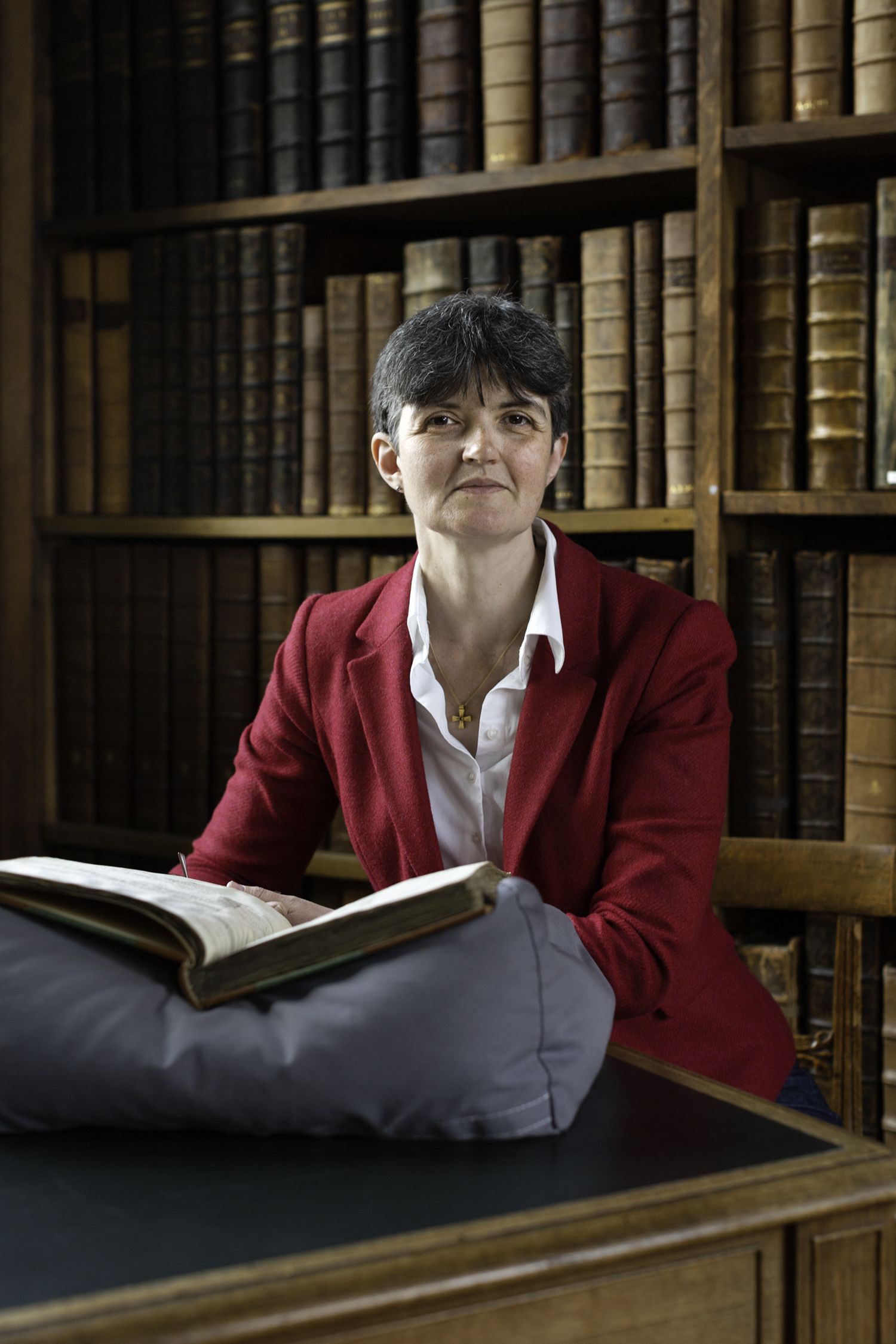
When Philippa Hoskin saw the job advert for the role of Parker Fellow Librarian in 2019, she was teaching at the University of Lincoln, where she had spent ten years setting up a centre of medieval studies. She was proud of the work she had done in Lincoln, but the role at the Parker seemed like it was ‘built for someone like me’. A historian of the high middle ages who specialises in the legal and administrative history of the English Church, Philippa has a background both in archives and academia. “I am interested in the study and cataloguing of manuscripts, and also in their preservation and care,” she says. “And I am passionate about outreach around manuscripts and early books.” Philippa and the Parker seemed to be a perfect fit.
Nearly four years on, her role at the Parker continues to tick all the boxes. Despite the intervention of COVID, Philippa has welcomed scholars from around the world, encouraged innovative research into manuscripts using both traditional and new technological methodologies, and overseen a variety of multidisciplinary exhibitions for College members and the public. Parker on the Web, the digital collection of over 500 of Parker’s manuscripts is widely used by scholars and non- academics around the world. She has brought on board a new post for early-career researchers for which funding is sought. And then of course, there was the presence of the Augustine Gospels at the Coronation of King Charles III, when Philippa was responsible for the transport and safeguarding of one of the nation’s greatest treasures.
Looking and listening
Philippa is a Tutor at Corpus and a Professor in the Faculty of Divinity, where she instructs students on the medieval church and pastoral care, ecclesiastical administration, and the history of the book. Her approach to teaching is similar to the way she explores a manuscript, from the meaning of the words on the page to the material qualities of the object. She says, “A former Corpus Fellow, Christopher Cheney, used to say medieval manuscripts are like good children from long ago: they don’t speak unless they are spoken to, and they never talk to strangers. And so you have to not be a stranger. I always tell my students when we’re looking at a manuscript that you have to ask the right questions. You have to say to it ‘what do you want to tell me? What are you about?’ Even some documents that we think are very mundane contain a multitude of intriguing possibilities. What were people using this book for? Why is it so heavy? Was it a working document? An administrative handbook? Could it have been a status symbol? These are the kinds of questions that interest me.”
Although it is the job of Parker Sub-Librarian Tuija Ainonen to assist readers who wish to study items from the Library, Philippa also likes to touch base with visiting scholars to deepen her own knowledge about the collection. “There are things you learn by looking and others you learn by listening. This is the advantage of having researchers around because not only do they tell you what they’ve found out but they also ask you questions that make you think more clearly about what you're doing, or your understanding of a text. And of course they often know something about the collection that I’m not aware of, because they may have published on it years earlier. And I just like talking to people!”
Sealed with wax
Philippa turns her expertise to practical uses. “In some disci-plines it can be difficult to measure whether you have changed what somebody does or thinks, or how they work. I believe in making the material objects we historians study accessible to people who are just starting their academic careers, or even those who aren’t academic at all.”
One of these areas of expertise is the study of wax seals and their matrices. Libraries and museums are filled with thousands of these seals, which were in widespread use in Britain across all classes of people by the end of the thirteenth century (the Parker Library alone contains several hundred). Documents were sealed as validation of ownership, gifts, grants, wills and many other attestations.
Philippa explains, “Seals are very personal. They belong
to a person who has chosen something as a representation
of themselves and attached it to a legal document. They can provide important clues about self-representation and identity.”
With Dr Elizabeth New of Aberystwyth University, Philippa developed the Imprint Project, a forensic and historical investigation of fingerprints and palm prints on medieval seals. The Project makes use of technology and interdisciplinary collaboration to answer questions and think in new ways about the practice and meaning of sealing for those many individuals of lower status in the central Middle Ages whose involvement in legal and administrative practice is so often disregarded. It also allows scholars to search the growing database of seals and matrices.
Daily life in the Parker
Philippa oversees not only the Library itself, but also the Modern Archives and the Conservation team. College Archivist Dr Genny Silvanus is responsible for papers from the late nineteenth century up to and including the current day, which includes the papers of naturalist and former Master Professor Oliver Rackham, which are currently being digitised. “We have to choose which papers and records to keep, and how we can engage with College members on their use. We want them to be accessible to the Communications Office to share interesting stories about the College history, and with the Development Office to engage alumni.” For instance, Genny has been working with students and former members on an oral history project looking at the time around the entrance of women to the College. Old Members enjoy sharing their memories, students deepen their knowledge of the College, and the whole College community is learning new things about this critical period in our early efforts to widen participation.
The Cambridge Colleges Conservation Consortium is housed behind the Library, in a small building called the Elephant Pen. The studio is filled with tools both ancient, such as specialist Japanese papers and gold embossers, and modern equipment for humidifying and cleaning centuries-old parchment and paper. Philippa works closely with Head of Conservation Flavio Marzo and his team, who care for manuscripts from the Parker and 14 other colleges. “The biggest enemy to the collection is time. Over the centuries time slowly destroys organic materials like those of manuscripts. Archives and manuscript libraries fight to slow down that damage. In terms of damaged or poorly preserved manuscripts, well, you don't tell a conservation department what to do, because they are the specialists and they tell you. I do discuss with Flavio what I’d like to workwith in the collection and he will advise me on the best possible way forward. Sometimes that’s actually doing nothing.”
The Library and the conservation team also collaborate on outreach to the public and to prospective students. This year, in collaboration with the Admissions Office, they hosted the Medieval Worlds residential programme for Year 12 state-school students to immerse themselves in medieval manuscripts, literature and history, from hands-on demonstrations on the preparation of medieval parchment by Flavio, to practising Middle English Poetry with Tuija and current ASNaC and History undergraduates. Likewise, the Bridging Course, the College’s flagship widening- participation programme, always includes sessions in the Parker.
Collecting for the collection
Philippa sometimes makes acquisitions for the Library, such as the recent purchase of a manuscript of nine roundels given by Matthew Parker to Queen Elizabeth I in the sixteenth century.
“The roundels felt very much that they were coming home to the Library, not just because they were a gift from Parker to the Queen, but because we could draw links directly from the text on the roundels to other books that Parker owned and studied.”
Similarly, Old Members may offer items suitable for the Library collection. Recently the daughter of a former Fellow donated her father’s collection of papers of the nineteenth- century cartoonist and book illustrator George Cruickshank; it will be named the Dr David Bruce Collection. Another alumnus left a collection of books that Philippa describes as ‘very much a Parker collection of books’, including first editions of Charles Darwin. “We certainly can’t take everything,” she says, “but we try to accept collections in the style and tradition of Matthew Parker’s own interests.”
New ways of looking
Three years ago, the College approved an annual, 12-month research post based in the Parker Library, subject to finding donors to fund the post long-term. The Parker Early-Career Research Fellowship is an opportunity for researchers to look at manuscripts and early printed books in different, interdisciplinary ways. The first of these Fellows, Dr Laure Miolo, focussed on the little-studied Elbing Collection which was donated to the College in the early seventeenth century by a former Fellow, Richard Pernham, and Mary Pernham, whose name appears in almost all the manuscripts. Dr Eleanor Parker has finished her tenure as the second Parker Research Fellow by curating an exhibition in the Wilkins Room that draws on different connections she has made between Parker manuscripts, material objects and original artworks.
“We are encouraging these young researchers to explore something in the Parker collection that they may have come across in their early research or that may lead them to a different path of scholarship. The year they spend with us allows them to put something together that makes them more credible candidates for the bigger research fellowships and posts in other institutions. And then we hope they will take their knowledge and ideas forward into their careers both nationally and internationally, becoming a modern and increasing part of Matthew Parker’s legacy.”
“Seals are very personal. They belong to a person who has chosen something as a representation of themselves
and attached it to a legal document. They can provide important clues about self-representation and identity.”
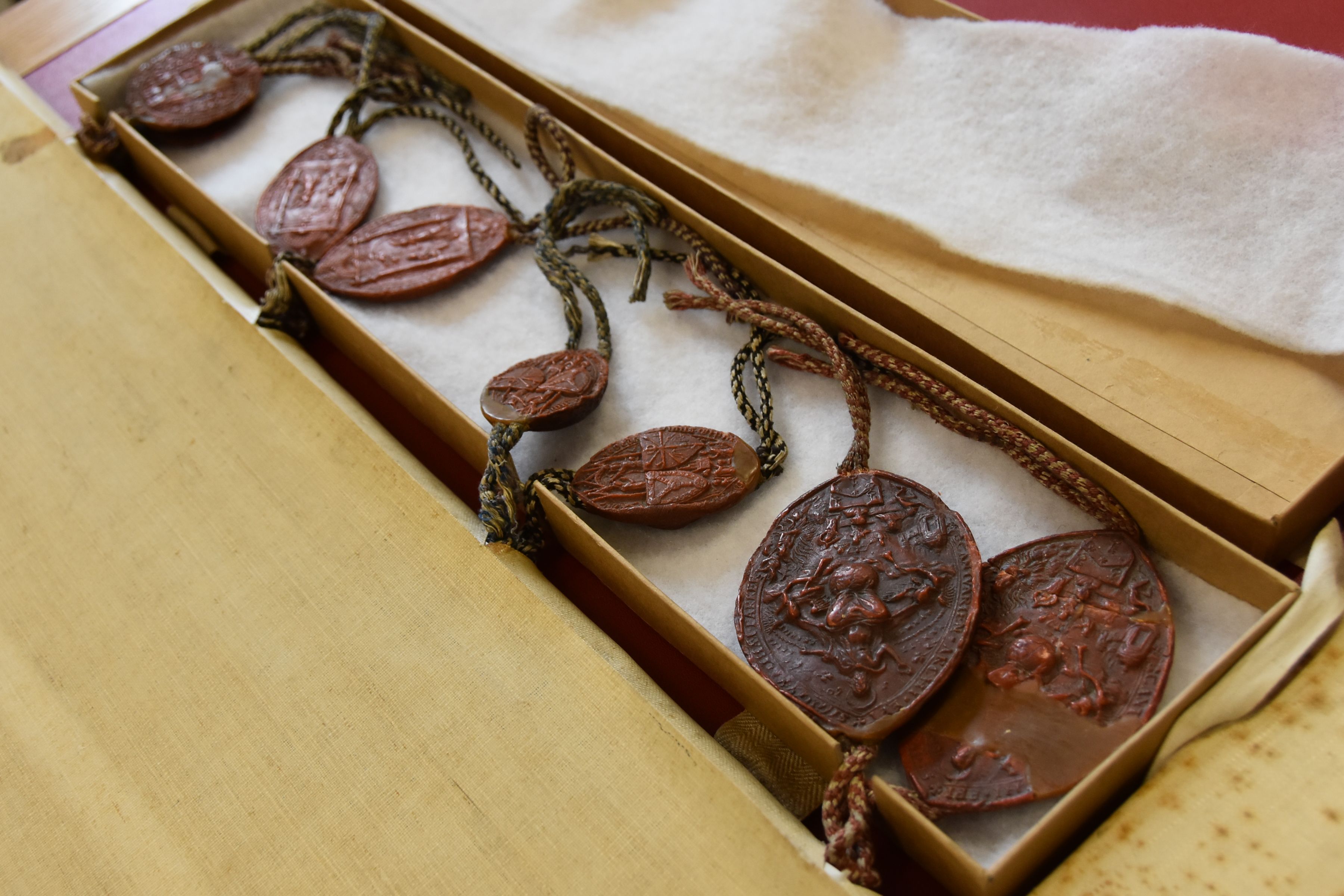
Seals from two sections of of the four-part indenture of 1574 concerning the care of Matthew Parker’s books. They include the seals of Parker himself and of the Colleges of Corpus Christi, Gonville & Caius and Trinity Hall.
Seals from two sections of of the four-part indenture of 1574 concerning the care of Matthew Parker’s books. They include the seals of Parker himself and of the Colleges of Corpus Christi, Gonville & Caius and Trinity Hall.
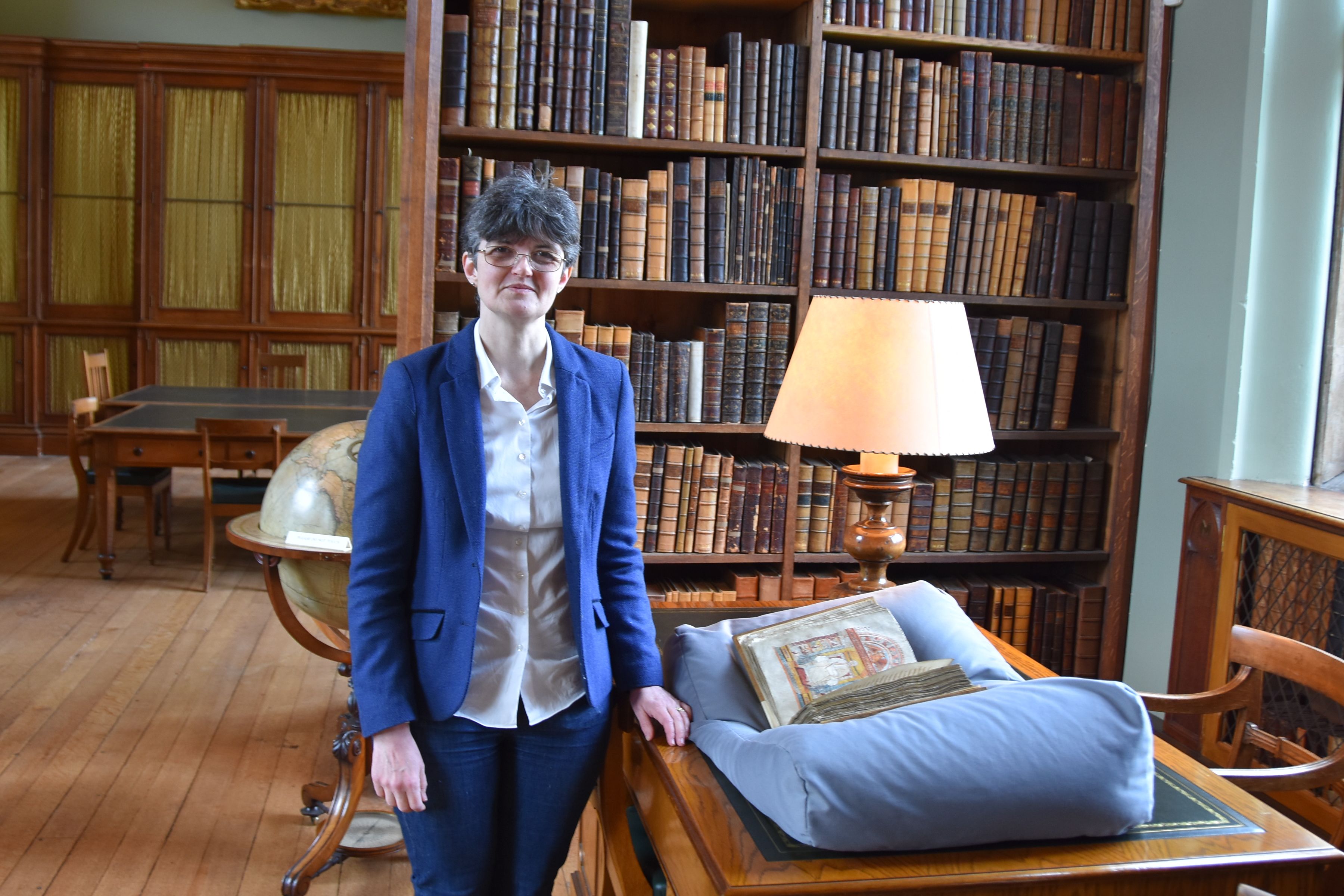
Philippa with the Augustine Gospels.
Philippa with the Augustine Gospels.
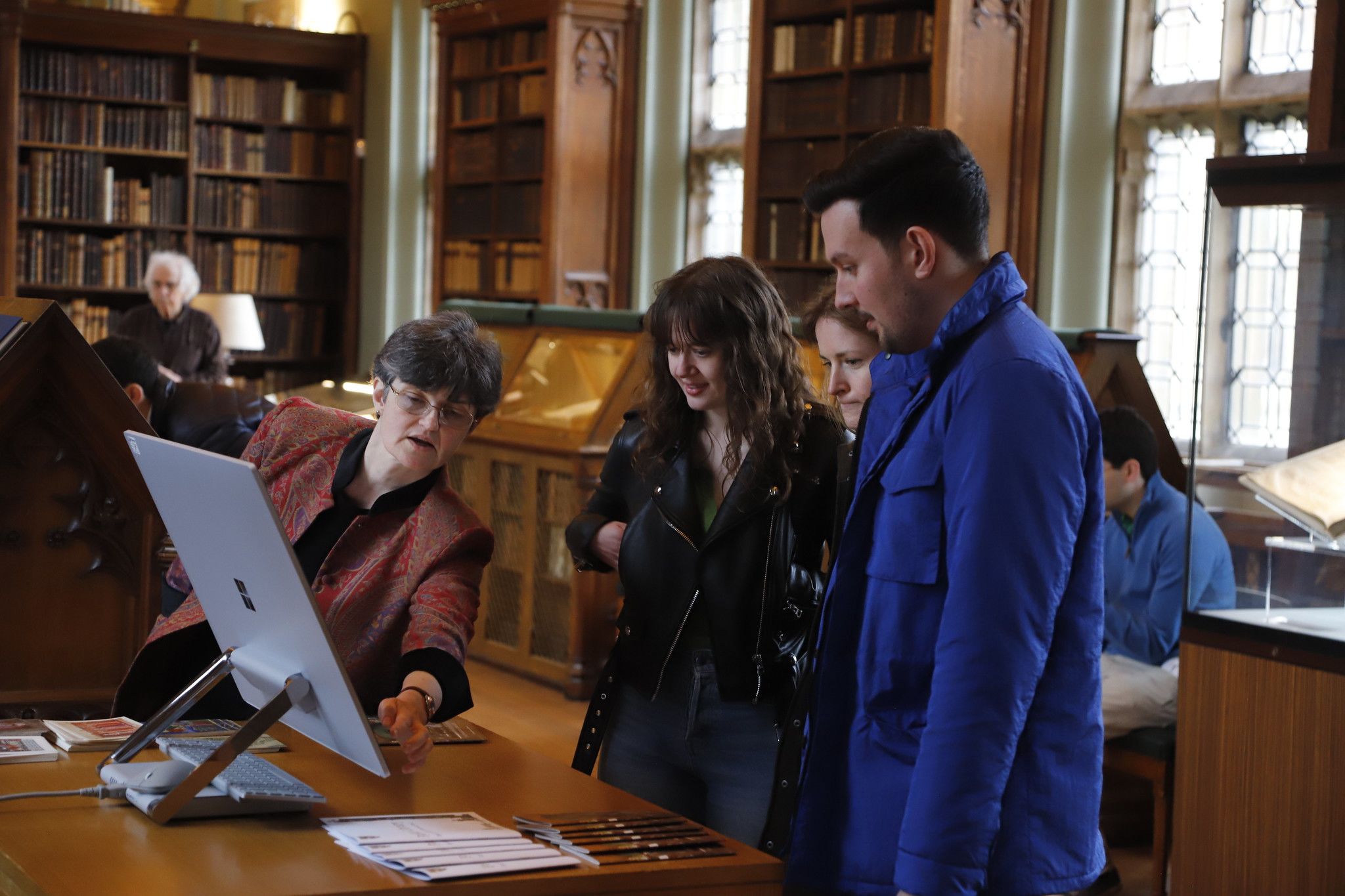
When the Parker Library is open to visitors or members, Philippa can often be found in the Wilkins Room showing items from the Collection.
When the Parker Library is open to visitors or members, Philippa can often be found in the Wilkins Room showing items from the Collection.
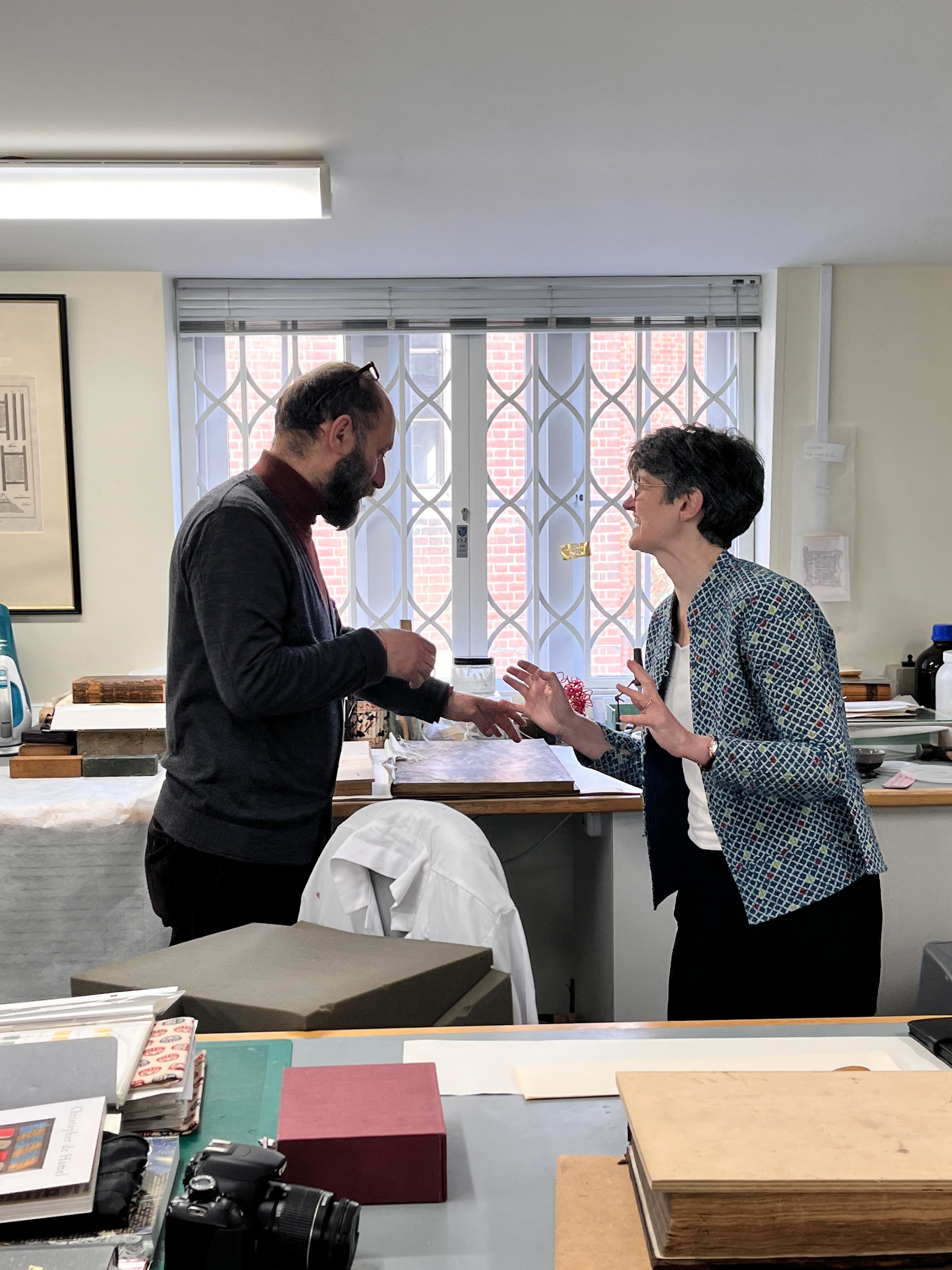
Philippa with Flavio Marzo in the Cambridge Colleges Conservation Consortium home - the 'Elephant Pen'.
Philippa with Flavio Marzo in the Cambridge Colleges Conservation Consortium home - the 'Elephant Pen'.

Philippa in the Chapel with the Augustine Gospels, on display for staff and members of the public.
Philippa in the Chapel with the Augustine Gospels, on display for staff and members of the public.
